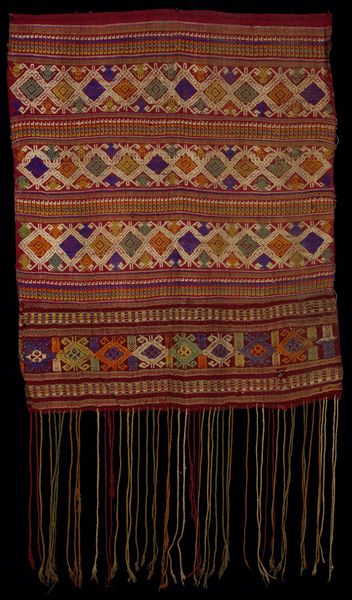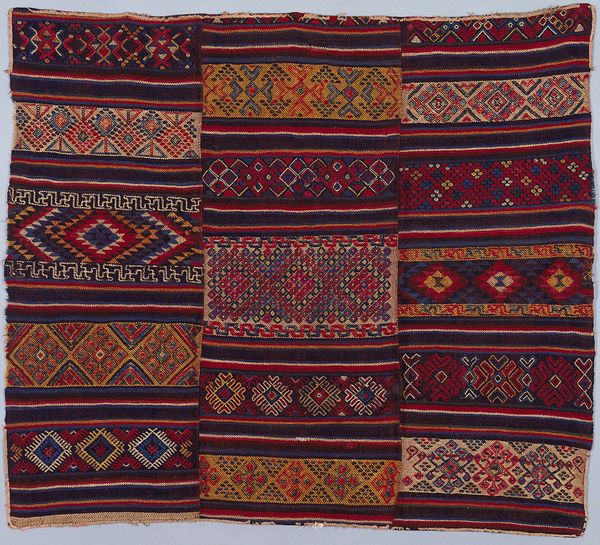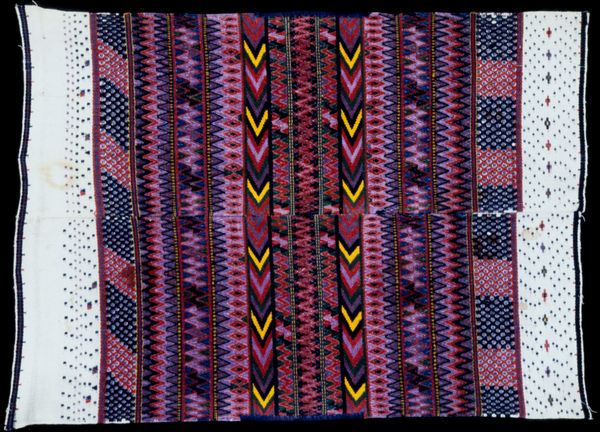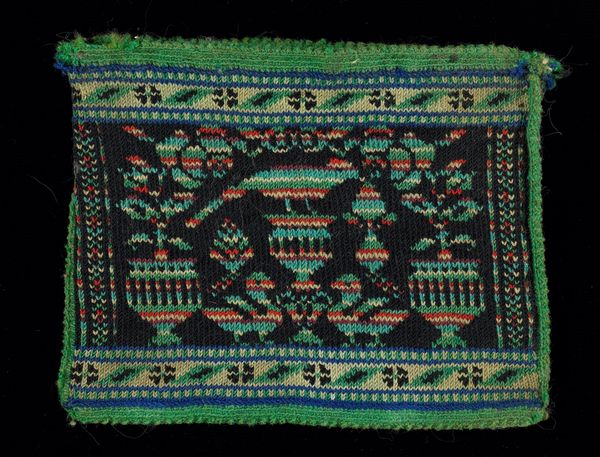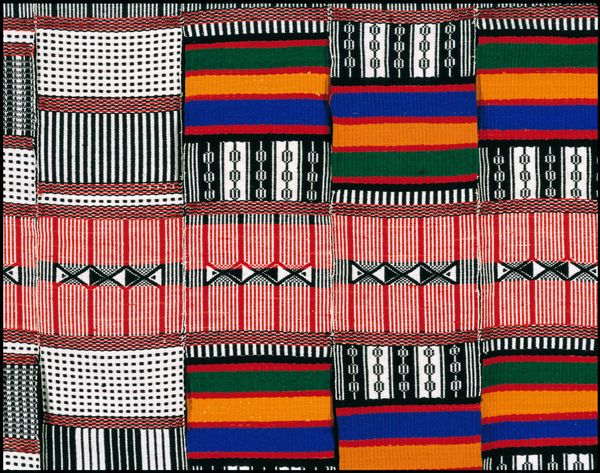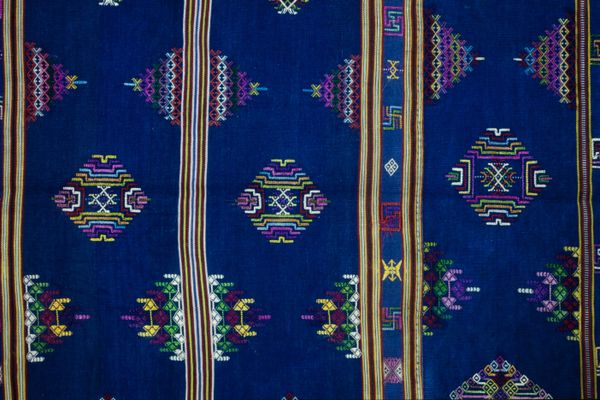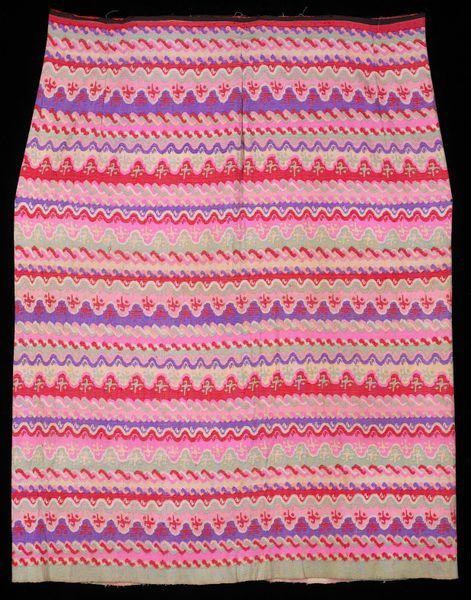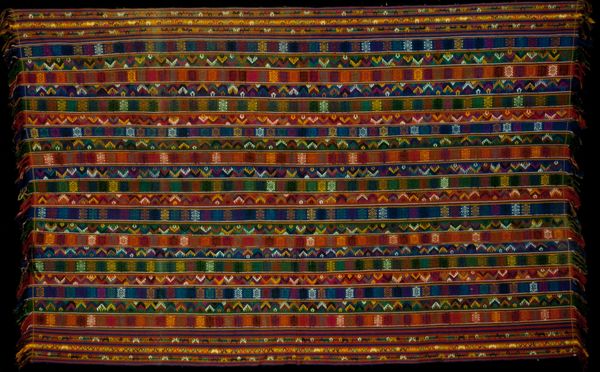
fibre-art, weaving, textile, cotton
#
fibre-art
#
weaving
#
textile
#
cotton
#
indigenous-americas
Dimensions: 21 1/2 x 33 in. (54.61 x 83.8 cm)
Copyright: Public Domain
Curator: Here at the Minneapolis Institute of Art, we have a striking example of Maya textile art: a woman's ceremonial blouse, or "Huipil," crafted sometime between 1955 and 1960. Editor: It’s just overwhelmingly rich! I’m immediately drawn to the incredibly vibrant, almost aggressively saturated purple that dominates the ground. The eye keeps jumping across the surface, struggling to find a still point amongst all the visual activity. Curator: That constant motion is by design. "Huipiles" like this are not simply clothing; they are complex texts woven with cultural meaning and spiritual significance. Each pattern, each color choice carries a weight of tradition and communal identity. The weavers themselves are viewed as living conduits of memory. Editor: I notice how the geometric patterns—zigzags, dots, stripes—are arranged in horizontal registers. The color choices seem deliberate and contained. Is there any logic to how these patterns are ordered from top to bottom? Curator: Likely, yes. These designs encode history and cosmology. A specific village, lineage, or belief system might be immediately apparent to someone versed in that particular visual language. For example, a certain arrangement of zigzags could allude to mountains, rivers, or even specific ancestors. Editor: It’s intriguing that such rigid geometry can evoke something organic, but the constant interplay of motifs somehow softens it. I guess that contrast contributes to that overall lively sensation. The more you look, the more micro-variations reveal themselves within the stricter lines. Curator: Precisely. The beauty here lies not just in aesthetic accomplishment, but in the preservation and continuation of ancestral stories. The knowledge and skill needed to create these textiles is handed down through generations, linking the weaver to an unbroken chain of cultural expression. Editor: Thinking about this textile in isolation does a disservice to its embeddedness. It only begins to communicate when one acknowledges all the dimensions outside the visual structure – time, culture, purpose…it challenges that purely ‘visual’ engagement I automatically revert to. Curator: That’s the inherent power of these objects. They exist simultaneously as aesthetic artifacts and living testaments to a vibrant, ongoing cultural heritage. Editor: It makes one aware of the limitations when applying just one critical lens, doesn't it? Well, this has certainly expanded my way of considering surface appearances today!
Comments
No comments
Be the first to comment and join the conversation on the ultimate creative platform.



